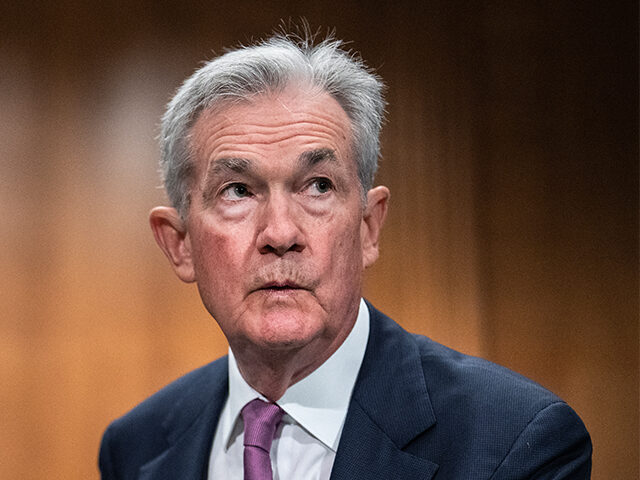Federal Reserve officials signaled Wednesday that they now see the economy requiring higher interest rates than previously thought to tame inflation.
Although Fed officials still think they will authorize three rate cuts later this year, they pared back expected rate cuts in the following years and slightly raised their expectations for their benchmark policy rate over the longer run.
The Fed releases the projections of officials for growth, unemployment, inflation, and core inflation four times each year. In addition, the officials pencil in where they think the Fed’s benchmark federal funds rate will be at the end of the current year, the end of the following two years, and over the longer-run.
The Fed presents those projections in a variety of ways in its Summary of Economic Projections. The summary includes a calculation of the median forecast and the range of forecasts. As well, it includes a “central tendency” of the forecast, which eliminates the top and bottom three forecasts.
In December, the median of those projections was for the Fed funds rate to be around 4.6 percent at the end of this year. That is the equivalent of 75 basis points of cuts, or three quarter point cuts.
The median view was unchanged in the March projections but the central tendency rose to 4.6 percent to 5.1 percent from the prior tendency range of 4.4 to 4.9 percent. The lowest projection climbed to 4.4 percent from 3.9 percent and the highest remained at 5.4 percent.
The median projection for the end of 2025 rose to 3.9 percent from 3.6 percent, an indication that Fed officials expect fewer cuts next year than they had previously. The central tendency range climbed to 3.4 to 4.1 percent from 3.1 to 3.9 percent. The bottom of the range of all projections rose to 2.6 percent while the top was unchanged at 5.4 percent.
The median projection for the end of 2026 climbed to 3.1 percent from 2.9 percent. The central tendency now runs from 2.6 percent to 3.4 percent, up from 2.5 percent to 3.1 percent. The full range of projections was unchanged at 2.4 percent to 4.9 percent.
Perhaps most notably, the Fed’s projection for the policy rate over the longer run climbed to 2.6 percent from 2.5 percent. This is the first time since 2019 that the longer run projection has been above 2.5 percent. The longer run central tendency is now 2.5 percent to 3.1 percent, compared with the earlier projection of 2.5 percent to three percent. The range was unchanged at 2.4 percent to 3.8 percent.
The Fed’s projection for overall inflation this year was unchanged at 2.4 percent but core inflation is now seen as running at 2.6 percent, up two-tenths of a point from the December projections. Next year’s headline inflation is seen as running 2.2 percent, up from 2.1 percent, and the view of core inflaiton was unchanged at 2.2 percent. The following year and the longer run view were unchanged at two percent.
Taken together, this suggests that, on balance, Fed officials now expect it will take slightly higher interest rates to get inflation down to their two percent target and to keep it there.
The Fed also sees more growth over the next few years. The median view of gross domestic product growth this year was raised to 2.1 percent from 1.4 percent. For 2025, the median increased to 2.0 from 1.8. For the following year, it rose to 2.0 from 1.9. The longer run projection was unchanged at 1.8 percent.
The view of unemployment also changed slightly. This year, the unemployment rate is seen as rising to 4.0 percent, down from the earlier median projection of 4.1 percent. The 2025 projection was unchanged at 4.1 percent while the 2026 projection moved down to 4.0 percent from 4.1 percent. The longer run median projection remains at 4.1 percent.

COMMENTS
Please let us know if you're having issues with commenting.